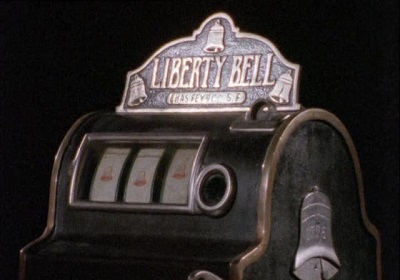
History of slot machines
Slot machines are the main earners in most casinos and also the leaders among all gambling machines. They’re not only popular in brick-and-mortar casinos but also in online casinos. Slot machines provide up to 70% of all earnings of casinos in the U.S. However, it was not always the case. Their boom dates back to the end of the eighties and early nineties of the 20th century, during which we saw the rapid technical development of slot machines. Until then, casinos were mostly dominated by large blackjack and table-game players.
Etymology
The word “slot machine” originates from the Greek word "automatos" and is used for technical devices or machines whose starting impulse independently and reliably performs predetermined activities, without requiring direct human interaction. The slot machine is hence a device which operates a game, either for entertainment or for potential monetary gains. Terms that are synonymous to slot machines slightly differ based on the terminology used in individual countries. These include: Slot machine, the slots, slot (USA, Canada), fruit machine (Great Britain), puggy (Scotland), poker machine – pokies (Australia). All of these are general terms for slot machines.
The first slot machine
Do you know where and when the first slot machine was created? Let us look at a few interesting facts from their history and development. The beginnings of slot machine date back to the late 19th century. Specifically, the first mechanical slot machine was constructed in 1891 in Brooklyn, NY, by Sittman & Pitt. A lever was used to operate the machine, which used a system of disks and symbols. A special combination of symbols meant that the player won. These machines were based on poker; they had 5 reels, each with 10 cards. Back then the machine did not provide direct payouts and players often times received rewards in the form of a drink, food, or other services offered at the given establishment. Attempts to reduce the probability of winning also date back to the early beginnings of slot machines. One such example was the removal of two cards, the jack of hearts and the ten of spades. Removing these two cards halved the probability of getting a Royal Flush.
C. A. Fey pioneered slot machines with his Liberty Bell
The first classical slot machine, with features similar to those of today, was created by inventor Charles August Fey in 1895. It was called the Liberty Bell. He fine-tuned and reduced the number of winning combinations by using 5 types of symbols (bell, horseshoe, diamond, heart and spade) on three reels. This then allowed him to offer automatic payouts after each possible win. The machine was so popular that it was manufactured in factories. Even though Liberty Bell was soon made illegal in California, the home state of Charles Fey, the number of orders from other states kept growing. Of course, imitations are created for virtually all popular inventions and this also applied to the Liberty Bell. In 1907, Herbert Mills from Chicago created a slot machine called the Operator Bell which then became prevalent in bars, tobacco stores, saloons, bowling clubs, barber shops and brothels. It found its place on the market and is nowadays also considered a pioneer in the world of slot machines. Both of these machines can today be found in the Nevada State Museum.
The boom of slot machines
The first electromechanical slot machine was called Money Honey and was developed by a company called Bally in 1963; it could pay out up to 500 coins without requiring operator intervention. The popularity of electronic games was on the rise and the classical lever was slowly moving to the sidelines.
Significant changes and innovations in the world of slot machines came with the introduction of video game machines in the eighties of the 20th century. The first video slot machine was developed in 1976 by Fortune Coin. Its first live test took place in the Las Vegas Hilton Hotel. The whole company together with its video slot machine technology was purchased by International Gaming Technology (IGT) in 1978. And finally, we'd like to mention one more “first” – specifically the first slot machine offering a second screen displaying a bonus reel. It appeared in Australia in 1994. In the U.S., it was developed by WMS Industries in 1996. The second screen allows players to access a bonus game that offers additional winning opportunities.
What is the future of slot machine gambling?
While the first slot machine dating back to 1895 was a simple mechanical machine, today’s modern slot machines consist of about 1200 individual parts and weigh about 120 kg. The number of slot machines increased at least by one quarter over the past quarter of the century. Their operation is legal in about 50 countries of the world.
We provided an overview of the colorful and interesting history of slot machines in brick-and-mortar casinos. Over the past more than 100 years, they experienced truly tumultuous changes. However, their development has not stopped. We’ll discuss the trends in the development of modern online slot machines in our article on the History of online slot machines.

The best online casinos

1. Betsafe
Betsafe was created in 2006 and today is part of the well-respected Betsson Group, based in Sweden. Its focus is to target rather more experienced players. And it has plenty of things to capture your attention – but perhaps the greatest eye-catchers include a gigantic range of games (e.g., over 1000 online slot machines) and an emphasis on security and high-quality support.

2. Mr Green
The wide range of exciting casino games includes various versions of roulette and blackjack, including games with live croupiers, video poker, bingo and of course, an infinite number of slot machines.

3. CasinoEuro
European-licensed casino with a long history. One of the best-known and well-trusted casino portals in Europe.

